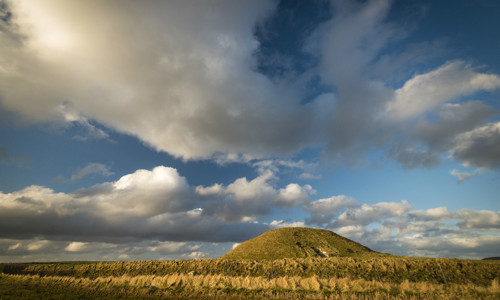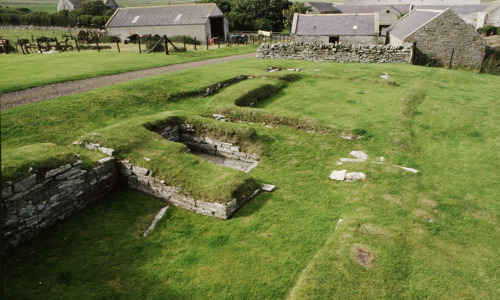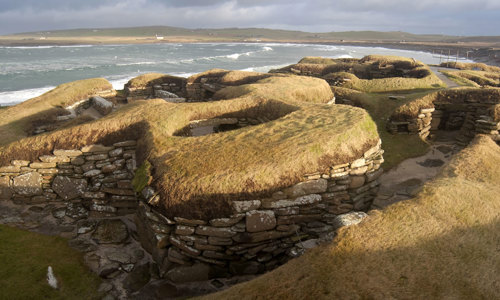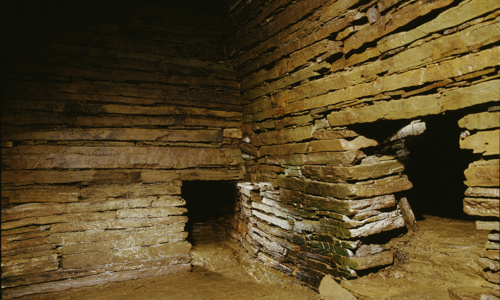History
An oddity
The Dwarfie Stane consists of a huge hollowed out block of sandstone. It is thought to be unique, as the only wholly rock-cut prehistoric tomb in the British Isles.
A narrow entrance passage opens into a main chamber, with two small cells either side. Each cell opening has a kerb, forming a carefully squared door. One cell has a stone ledge or ‘pillow’ at its eastern end.
The large rock that once sealed the tomb now lies in the heather beside the tomb entrance. The tomb was still sealed in the 1500s, though at some point someone attempted to break in through the roof.
Tomb or retreat?
The Dwarfie Stone is categorised as a Neolithic tomb, based on comparison with similar examples from the Mediterranean. Archaeologists believe it was carved between 3500 and 2500 BC.
The stone’s inhabitants
In his novel The Pirate, Sir Walter Scott alludes to the stone’s function as the favourite residence of Trolld, a dwarf famous in the northern sagas.
In 1846, the famous stonemason and geologist Hugh Miller carved his initials and the year of his visit into the right-hand cell.
British spy Major W. Mouncey carved a beautiful Persian script into the soft sandstone of the tomb in 1850. It reads: ‘I have sat two nights and have learned patience.’ He also carved his name backwards in Latin.












